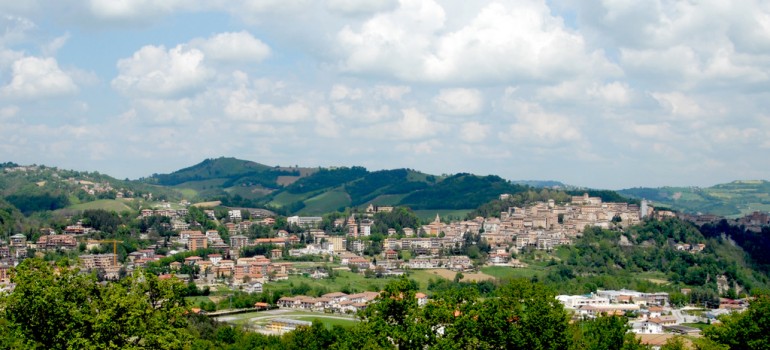
Art has always been present in the community of Amandola, one only needs to have a look around to realize it, so the urban structures, buildings and the churches themselves are examples of a cultural vivacity that has lasted for centuries. Artists and master of varius specializations have come here, leaving their mark, thanks also to local noble families and Maecenas. After the decline of the Roman Empire several waves of barbarians followed; of these the ones who achieved the most stable settlements were the Longobards. Also in the zone the presence of Benedictines was affirmed, they were maybe preceeded by other monastic forms and already in the eighth century one could count varius abbeys. It was really the Benedictines who introduced new agricultural technologies, and above all, they provided tillage and drainage. The origin of the town goes back to 1248, it was then that three castles of Agello, Leone and Marrabbione united and erected in common liberty. The name of Amandola is of medieval origin and derives from “Mandorlo” (almond tree), a plant that must have excelled in the zone; since 1265 there are the statutes. During the successive centuries the community of Amandola to defend its own independence, was frequently struggle with Ascoli Piceno. The deep sense of religion of the population together with marked sense of contact with other people, has favoured a not indifferent artistic richness and the creation of a valid artisan school. Amandola today is one of the most important Sibillini centres. Principal works of art to be admired: the door of St. James, 15th century, the Church of St. Augustine or Sanctuary of the Blessed Anthony, the Church of St.Francis, at the beginning constructed as a convent by the Conventual Minorites, the Podesta Tower: ruins of the fortress built in 1368, the Sts. Trinity Church, the convent of St. Bernardine that rises on the Tenna, built in 1425, the Church of St. Maria a Pie d’Angello whose first historical information dates back to 1403, the Church of Sts. Vincent and Anastasius or abbey of St. Salvador founded by the Benedictines in the 6th century and rebuilt in Roman form, probably in the 13th century.